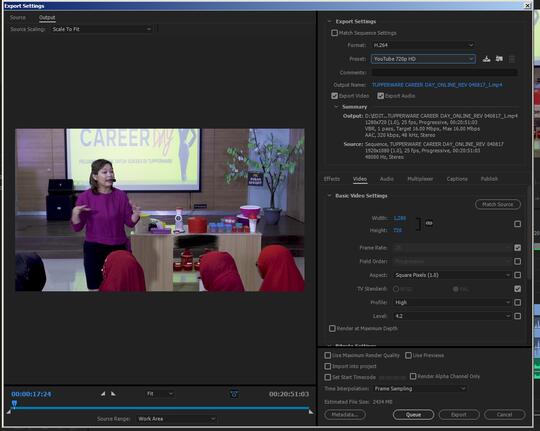

- Premiere pro 2017 render sequence for free#
- Premiere pro 2017 render sequence how to#
- Premiere pro 2017 render sequence software#
- Premiere pro 2017 render sequence Pc#
If you are done with a project and unlikely to touch it anytime soon, it’s completely fine to clear out your cache. It simply deletes the computer’s secret extra files. Note: deleting old cache files doesn’t delete your media or footage at all. You can choose whether you’d like this done after a certain amount of time or once a certain cumulative file size is reached. You also have the option here to set up parameters for Premiere Pro to periodically clear out some old cache files. Solid state drives are the fastest and becoming more and more affordable - Samsung has an excellent one for under $100. This may be a more affordable alternative to purchasing a completely new system. By selecting a location on a separate (faster) drive, you are likely to see an improvement in performance. You can then change the location of your media cache. Move the location to a faster SSD external drive However, you can optimize Premiere’s performance a bit by heading over to Premiere Pro > Preferences > Media Cache > Browse Note: merely deleting the Media Cache isn't likely to boost performance unless your hard drive was dangerously close to full. If this goes unchecked for too long, it will eventually eat up all your space and slow things down. Just know that they are there and after some time, the media cache can begin to eat up valuable hard drive space. We won’t get into the details of these files, because frankly they are complicated computer language. Clear Your Media Cache + Faster SSD DriveĮvery time you import a file into a Premiere Pro project, various types of media cache files are created.

Premiere pro 2017 render sequence Pc#
For PC users, you should have CUDA as an option. From this dropdown, you should select “Mercury Playback Engine GPU Acceleration.”įor Mac users, choose the recommended (Metal) option on the top. Under “Video Rendering and Playback,” there’s a “Renderer” dropdown.

In order to confirm that you’ve turned this feature on, navigate to: GPU Acceleration is a fancy way of saying that the computer will allow both the graphics processing unit (GPU) and the computer processing unit (CPU) to run together in order to facilitate more difficult and complicated processes (like many things done in Premiere Pro). The first easy thing we can do is to make sure that GPU Acceleration is turned on.
Premiere pro 2017 render sequence software#
Let’s talk about a few quick tweaks we can make within the software itself to give ourselves a head start. The speed of your computer does greatly impact the speed of render, but there’s only so much you can alter there without spending lots of money on a new computer. Obviously you want to make sure your system is functioning at it’s best.

Premiere pro 2017 render sequence for free#
If you don't have a copy of Adobe Premiere Pro yet (my favorite video editing program), you can try it out for free here. In today’s post we’re going to look at a few methods for speeding up your render process and overall workflow in Premiere that could end up saving you hours of time for your next project. It took each simple tweak several minutes to render before I could make another change to review. I was working hard to get the timing correct and iron out the details, yet every single time I made a change, I had to render the project in order to properly review it without dropping frames and being unable to view it in real time. I was recently editing a project for a client that involved a complicated series of clips and effects at the very beginning of the film.
Premiere pro 2017 render sequence how to#
Email How to Render and Edit Faster in Premiere Pro


 0 kommentar(er)
0 kommentar(er)
